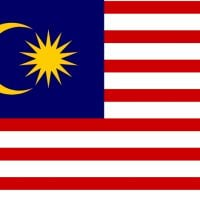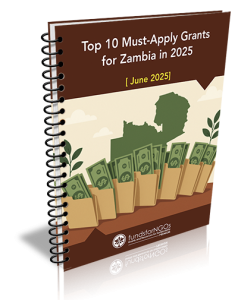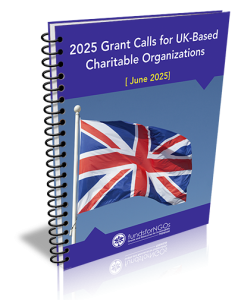Deadline: 18-Sep-25
The European Commission (EC) has launched the 6G NTN-TN Unification/Integration Programme.
Scope
- The scope of this topic focuses on the following areas:
- Management of multiple access networks through unified Control Plane capable of optimizing TN-NTN service provision according to traffic related parameters (QoS level, bandwidth, sustainability, latency, storage requirements) and related RAN management, also accounting for very demanding use-case scenarios including public safety use-cases (e.g. PPDR) and system relying exclusively on satcom connectivity like aeronautic use cases.
- Management capabilities for independent reconfiguration of the NTN part for performance, security and resilience optimisation at system and subsystem level.
- Dynamic routing in multi-dimensional networks with selection of optimal paths for traffic, which is a key feature in leveraging the potential of NTN-TN unification and integration including optical links, improving (transport and mobility) protocols, flexible topology and traffic routing across such dynamic topologies with long-propagation link characteristics. For what concerns optical links (ISL) the approach is to consider them at system level characteristics and performance properties. However, development of specific technologies/subsystems for ISL is not in scope.
- Extension of a reference multi orbit constellation system(s) as evaluation framework for the assessment of routing and mobility schemes including various architectural splits. It should cover robustness of the scheme for disaster situation when TN is not available. The reference system may also address feasibility of the constellation considering spectrum usage from existing systems.
- Spectrum issues including i) novel schemes for dynamic spectrum access and sharing in FR3 (7 – 15 GHz possibly extended up to 24 GHz), providing good cost-coverage trade-off; ii) where applicable dynamic reuse of TN frequencies for NTN use where TN spectrum is not assigned or for very demanding scenarios including public safety use-cases.
- Multi tenancy and end to end resource slicing capabilities across multiple tenants, covering the space resources and including seamless mobility and handover between various segment, either TN to NTN or across 2 NTN infrastructures.
- Adaptability and versatility of the scheme to cover also non satellite 3D connected nodes and early system concepts (to be developed in subsequent phases) to provide GNSS free positioning with a better positioning accuracy/availability.
Funding Information
- Funding Amount: 8 000 000
Eligible Activities
- The following activities are generally eligible for grants under Horizon Europe:
- Research and innovation actions (RIA) — Activities that aim primarily to establish new knowledge or to explore the feasibility of a new or improved technology, product, process, service or solution.
- Innovation actions (IA) — Activities that aim directly to produce plans and arrangements or designs for new, altered or improved products, processes or services. These activities may include prototyping, testing, demonstrating, piloting, large-scale product validation and market replication
- Coordination and support actions (CSA) — Activities that contribute to the objectives of Horizon Europe.
- Programme co-fund actions (CoFund) — A programme of activities established or implemented by legal entities managing or funding R&I programmes, other than EU funding bodies.
Expected Outcomes
- The main outcome will be the availability of core technologies, architectures and protocols that can be indistinctly used for terrestrial or non-terrestrial networks for the provision of seamless services across an access and network fabric continuum overcoming the distinction between satellite and terrestrial access with seamless roaming capabilities between the two segments (beyond Hybrid network). It targets:
- Architectures and technologies requiring a very tight cooperation between the SNO and the MNO’s, towards a seamless TN-NTN communication continuum, and catering for a multiplicity of possible business models across the various domains.
- End to end service capabilities either through a TN segment or through an NTN segment, depending on relevant parameters including coverage, RT or NRT constraints, bandwidth and sustainability aspects.
- Innovative models such as managed multi tenancy of the space segment.
- Independent reconfiguration of the NTN part for performance, security and resilience optimisation.
- Compatibility with the most innovative use cases and their demanding requirements such as high rate Direct to Device, PPDR and other NTN specific use cases.
- Adaptability of the technologies, protocols and architecture (or a subset of those) to non-satellite scenarios such as drones or other flying 3D nodes.
Eligibility Criteria
- Any legal entity, regardless of its place of establishment, including legal entities from no associated third countries or international organisations (including international European research organisations) is eligible to participate (whether it is eligible for funding or not).
- A ‘legal entity’ means any natural or legal person created and recognised as such under national law, EU law or international law, which has legal personality and which may, acting in its own name, exercise rights and be subject to obligations, or an entity without legal personality.
- To be eligible for funding, applicants must be established in one of the following countries:
- the Member States of the European Union, including their outermost regions:
- Austria, Belgium, Bulgaria, Croatia, Cyprus, Czechia, Denmark, Estonia, Finland, France, Germany, Greece, Hungary, Ireland, Italy, Latvia, Lithuania, Luxembourg, Malta, Netherlands, Poland, Portugal, Romania, Slovakia, Slovenia, Spain, Sweden.
- the Overseas Countries and Territories (OCTs) linked to the Member States:
- Aruba (NL), Bonaire (NL), Curação (NL), French Polynesia (FR), French Southern and Antarctic Territories (FR), Greenland (DK), New Caledonia (FR), Saba (NL), Saint Barthélemy (FR), Sint Eustatius (NL), Sint Maarten (NL), St. Pierre and Miquelon (FR), Wallis and Futuna Islands (FR).
- countries associated to Horizon Europe;
- Albania, Armenia, Bosnia and Herzegovina, Canada, Faroe Islands, Georgia, Iceland, Israel, Kosovo, Moldova, Montenegro, New Zealand, North Macedonia, Norway, Serbia, Tunisia, Türkiye, Ukraine, United Kingdom.
- the Member States of the European Union, including their outermost regions:
For more information, visit EC.








































